
On this page you will find examples of services and projects undertaken by GPM Ecology.
Fulfilling Planning Requirements
A strong element of GPM Ecology workload is geared towards fulfilling planning requirements for clients on both large and small-scale sites, as directed by National Planning Policy Framework and wildlife legislation. Project experience include: private small housing, housing association, pipeline, golf course, public sector, industrial, large residential, infra-structure, recreational and landfill developments.
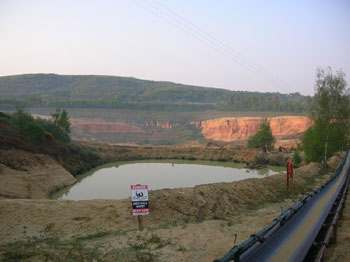
Quarry and proposed landfill site
Ecological Project Management
GPM Ecology has co-ordinated ecological works on many large-scale development schemes. This has included Great Crested Newt surveys and mitigation across Southern England on behalf of Water companies from 2001 to present. A pipeline installation across the Sussex Weald, required over 170 ponds to be surveyed for Great Crested Newts during spring 2002. In subsequent years GPM Ecology has co-ordinated surveys in relation to extensive refurbishment of Waste and Water Treatment Works.

Water-colour of Newt Surveyors on the High Weald, by Mary Burgess
Protected Species Surveys
GPM Ecology and associates hold licenses issued by Natural England for handling and surveying protected species. Protected Species Surveys are required to fulfill planning requirements and wildlife legislation (Wildlife and Countryside Act 1981, Protection of Badger Act 1992, Habitat Regulations 1994). Survey expertise includes all UK amphibian and reptile species; Bats; Badger; Breeding-Birds; Crayfish; Dormice; Otter; Water Vole.
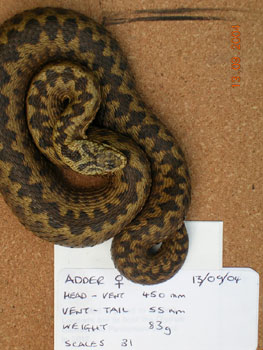
Adder survey: photo-ID and record of measurements, Surrey 2004.
Mitigation (Protected Species)
GPM Ecology and associates have co-ordinated mitigation schemes for: Badger; Bats; Birds; Crayfish; Dormice; Great Crested Newts; Reptiles; Water Vole. During 2015 and 2016 GPM Ecology held three Great Crested Newt development licences, co-ordinating mitigation on a variety of scheme (see the News pages for more examples).
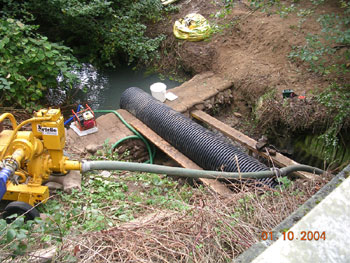
Crayfish mitigation, Sussex 2004
In 2004 GPM Ecology co-ordinated Crayfish mitigation prior to the re-coating of a corrugated metal culvert beneath a road bridge in Sussex, which included diversion of the River; drain-down and capture/release of crayfish.
Management Plan
GPM Ecology produce habitat management plans and where necessary will seek grant funding to assist with their development.
Currently GPM Ecology is assisting with the ecological management of a major photo-voltaic collector development within the New Forest National Park, installed in 2012. We have also overseen 12-years of an ecological management plan at a prestigious Surrey heathland golf-course from construction in 2000 until 2012.
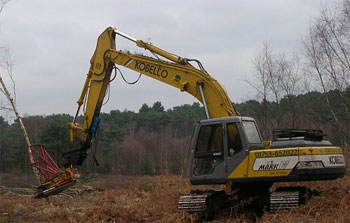
Heathland Management
Habitat Creation
GPM Ecology has designed and implemented numerous habitat creation schemes including pond creation, woodland planting, heathland management and development of community apple orchards.
We have conducted Great Crested Newt surveys at East Surrey Hospital since 2004 in association with the construction of a cardio-vascular unit and development of new operating theatres. Two new breeding ponds were constructed in the hospital grounds during 2005, 2013 and an apple orchard planted in 2015.
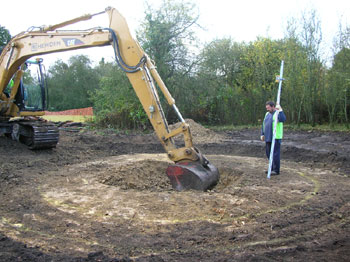
Pond creation, East Surrey Hospital
Gareth Matthes BSc MSc MCIEEM is a member of the Institute of Ecology and Environmental Management and as a full member of CIEEM can be considered an experienced Suitably Qualified Ecologist (SQE) as defined in the BREEAM guidelines. GPM Ecology has conducted numerous ecological assessments and carried out mitigation in relation to Housing Association and Eco-Home credits.

Translocation of species-rich acid-heath lawn-turf from a Housing Association site to a heathland golf course, in Surrey during 2008. While it was not possible to score a credit for Protection of this Ecological Feature (Eco 3), the acid-heath lawn was turf stripped and re-planted on a heathland golf-course, as a key recommendation for the Ecological Enhancement Scheme (Eco 2).
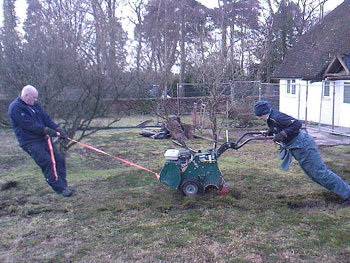
Translocating heath/lawn turf
Slow-worm relocation on small Housing Association Development, Winchester, Hampshire. Creation of compost heap release sites and relocation of Slow-worms form part of Key Recommendations towards the Ecological Enhancement Scheme (Eco 2). Provision of home-composting will also make the development eligible for a Composting-credit (Was 3).
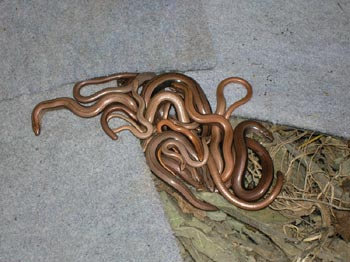
Slow-worms on compost heap